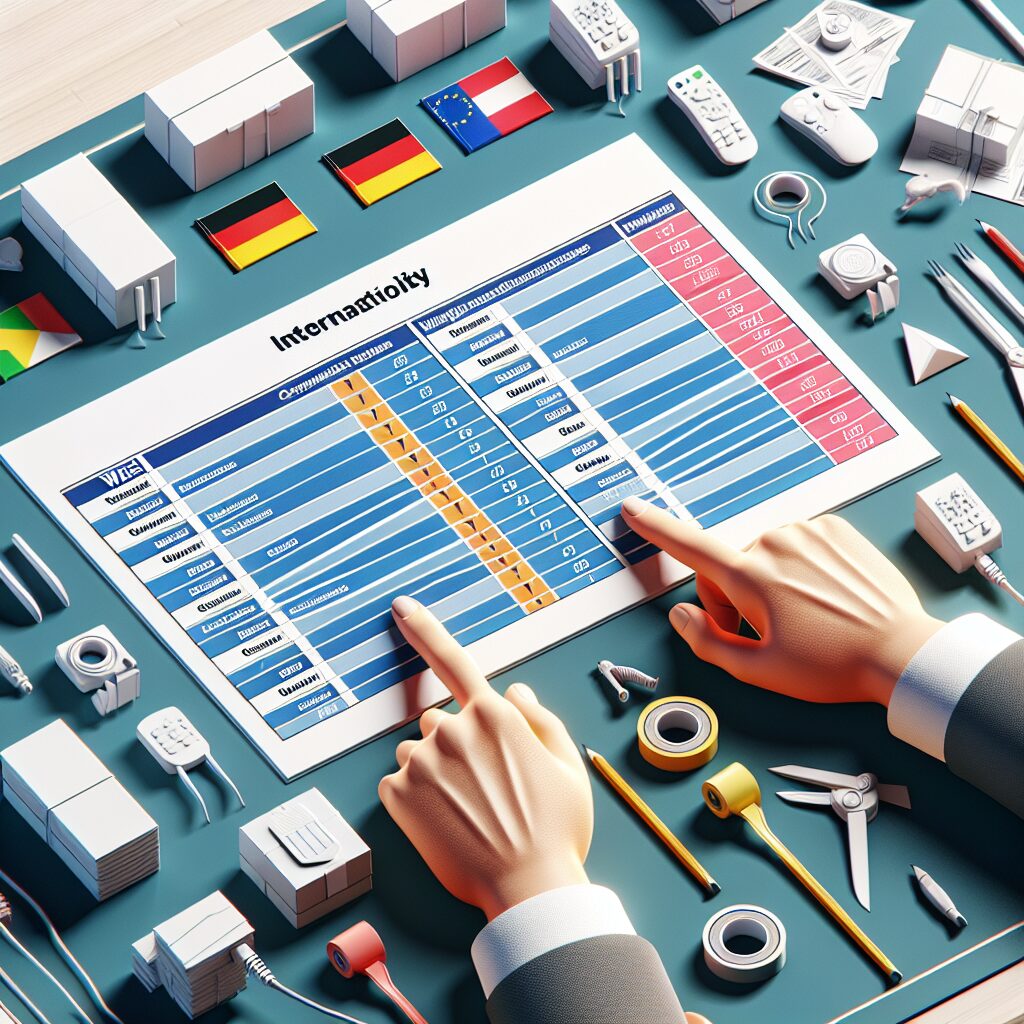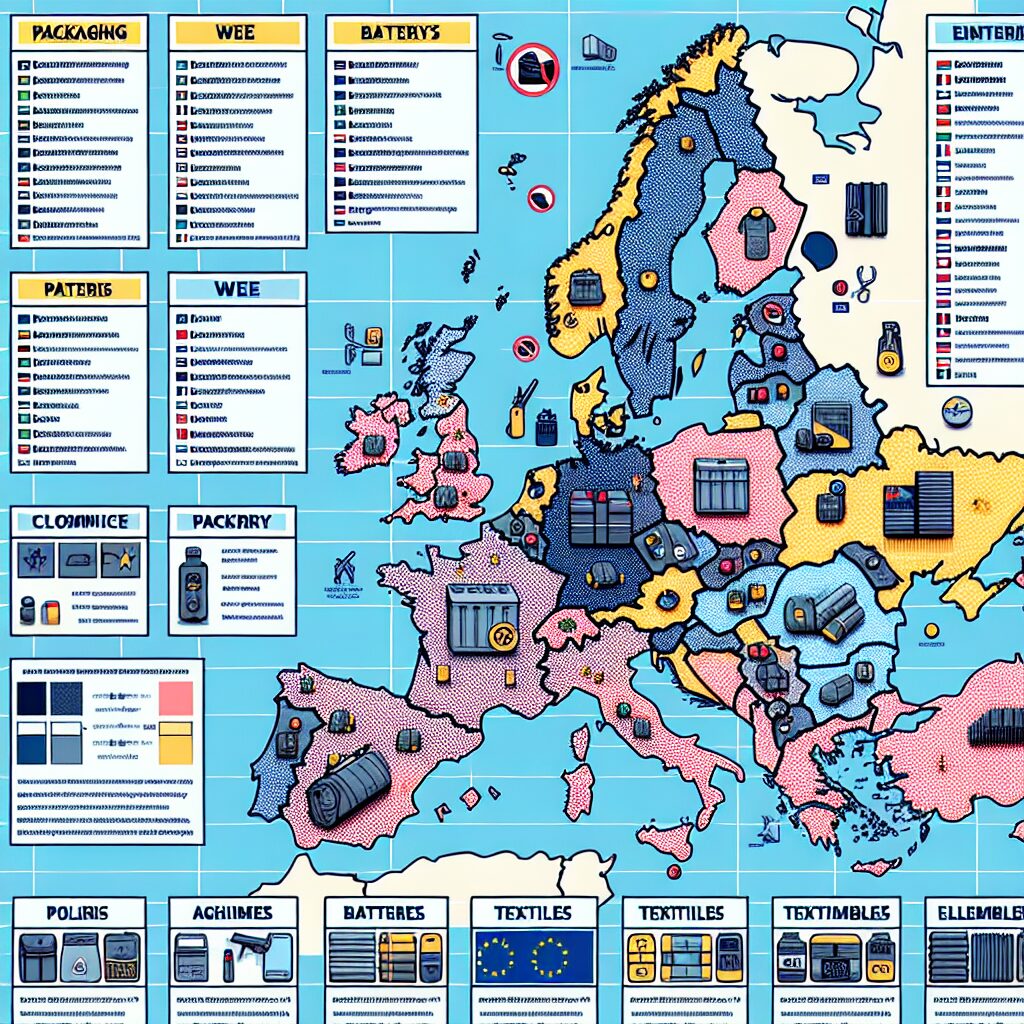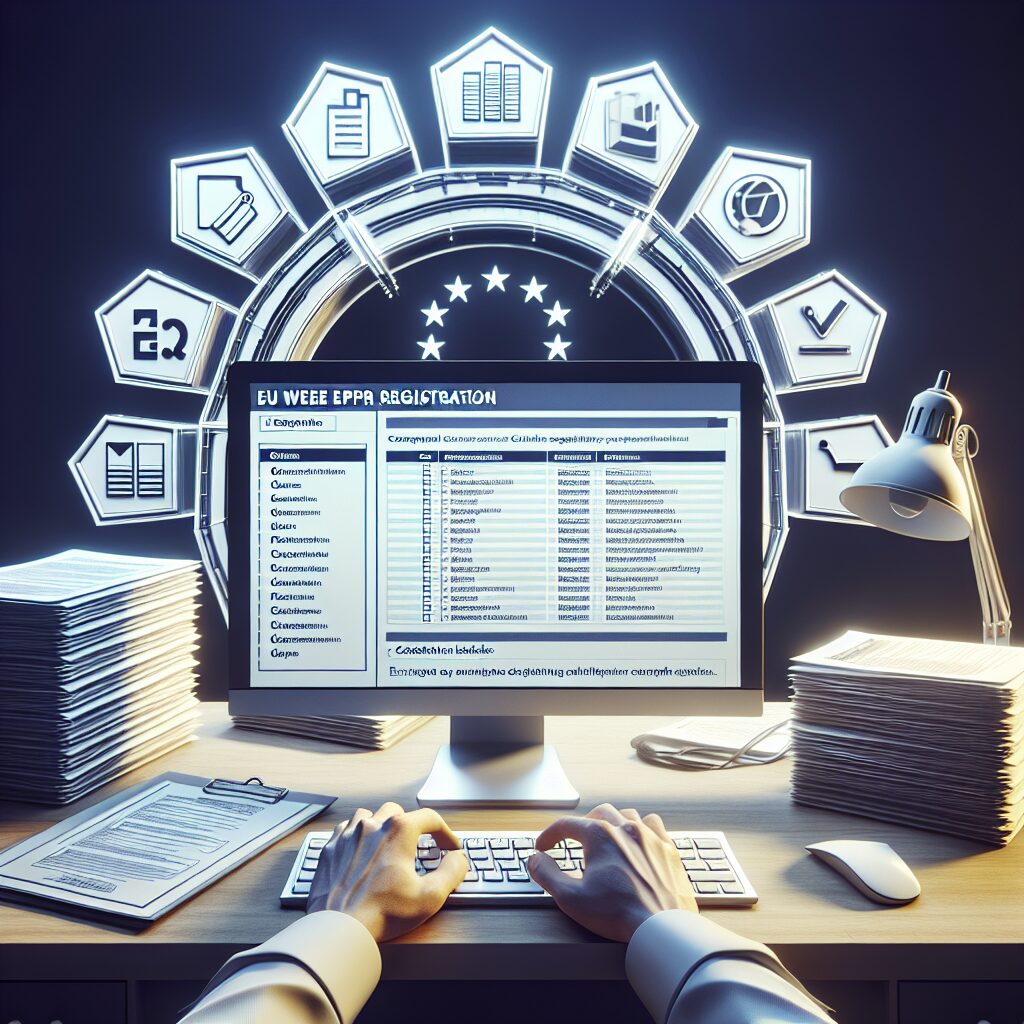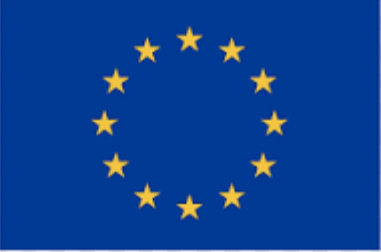About eldris
Epr.eldris.ai leads the EPR sector, in fast, automated, AI Agent EU Complaince. LUCID Packaging, WEEE, and Battery Compliance for Brands, E-Commerce and Service based businesses expanding into the EU.
In This Article
- EPR applies to all embedded batteries in electronics sold across the EU from 2025.
- Producers must register, report, and label compliant with new battery regulations.
- National battery schemes and eco-modulated fees are essential components of compliance.
- Failing to prepare may result in legal, financial, and reputational consequences.
- Compliance opens market access, builds trust, and reinforces your brand’s sustainability credentials.
What Is EPR Batteries Compliance for 2025?
Understanding the Regulatory Shift
EPR batteries compliance refers to the obligation imposed on producers of electrical and electronic equipment (EEE) with embedded batteries to ensure proper recycling, labelling, registration, and reporting under Extended Producer Responsibility legislation. This compliance framework holds producers accountable for the entire lifecycle of batteries – from production and placement on the market to post-consumer collection and recycling.
By 2025, the European Union’s revised Battery Regulation (EU 2023/1542) will be fully enforceable. This new directive significantly expands EPR obligations to include all embedded portable batteries inside consumer electronics. Whether you’re manufacturing smartwatches, fitness trackers, smartphones, laptops, or power tools, the embedded power sources inside your products fall under EPR scope. Non-compliance will no longer result in simple warnings – financial and legal penalties will apply.
The policy aim of EPR batteries compliance is clear: to promote sustainable battery production and end-of-life management. In fact, the 2025 compliance framework is a decisive pivot towards a circular economy for batteries within the electronics sector. That means traceability, documentation, proper take-back schemes, and sustainable sourcing will no longer be optional – they’ll be enforceable.

Who Must Comply with EU Battery EPR?
Identifying Obligated Electronics Producers
Many businesses are still unaware that EPR batteries compliance is not just for raw battery producers. If you place battery-powered products on any EU market – whether through traditional retail, online marketplaces, or dropshipping models – you are likely considered a “producer” under EPR law. This includes importers, own-brand manufacturers, and distant sellers operating cross-border without an EU legal entity.
Crucially, Amazon sellers and e-commerce brands who import electronics embedded with lithium-ion or nickel-based batteries are now fully within scope. This widens compliance obligations significantly. SMEs and startups launching innovative consumer devices must also comply, regardless of production volumes. The European Commission explicitly states that even single-product launches can trigger EPR requirements.
Additionally, companies that affix their brand to electronics products (white-label brands) are legally responsible, even when outsourcing manufacturing to third parties located outside the EU. Responsibility cannot be transferred or delegated under EU law, making it essential to understand one’s supply chain and legal exposure. Early preparedness is key. Learn more about EU Batteries EPR and Product Compliance
Key Compliance Steps for Embedded Battery Devices
Registration, Labelling, and Data Tracking
To achieve EPR batteries compliance, businesses must undertake a series of procedural and data-related actions. Firstly, each producer must register with the appropriate EPR authority in every EU country where their products are sold. These authorities vary by member state but serve as the enforcement body for both registration and reporting obligations.
Second, all products with embedded batteries must feature clear and compliant labelling. The EU requires visible battery symbols, capacity ratings, and safe disposal markers. In addition, manufacturers must draw up a technical file and ensure markings comply with CE and battery labelling rules. Non-compliance with labelling will be grounds for seizure or removal from the market.
Third, data management is central. Monthly or quarterly reporting must cover volume sold, battery weight, chemistry type, and country of end-market. This information enables authorised battery stewardship schemes to meet collection and recycling targets. Companies may also need to report material sourcing data, particularly when using cobalt, lithium, or nickel, which are subject to due diligence and sourcing transparency requirements.
Timeline: What Happens in 2025 and Beyond
Rollout of New EPR Enforcement Across the EU
2025 is not just a marker; it is the enforcement deadline where EU authorities will begin aggressive oversight of EPR batteries compliance. Although the Battery Regulation was passed in 2023, the European Commission provided a transition phase for producers and national enforcement bodies. This window is now rapidly closing.
From 18 February 2025, all consumer electronics with embedded batteries must be fully registered with compliant labelling and traceable disposal plans. The enforcement extends to all 27 EU nations, each of which will have local schemes and obligations tied to their environmental authorities. Non-compliant imports will be blocked at customs, delisted from marketplaces, and subjected to monetary fines.
Crucially, 2025 also initiates successively stricter recycling targets and performance audits. Producers must adapt to a rolling compliance roadmap. From 2026 onward, eco-design requirements and carbon footprint declarations will be mandated as part of regulatory filings. Current rules on EPR for embedded batteries
How EPR Impacts E-Commerce and Global Brands
Cross-Border Compliance and Local Schemes
The digital marketplace has created an ecosystem of sellers with little physical presence in the countries they distribute to. Under the 2025 EPR batteries compliance regime, that loophole closes. Distant selling models – such as Amazon FBA or private webshops delivering to the EU from other regions – now carry full responsibility to register and comply across all relevant markets.
Furthermore, each EU nation operates its own EPR stewardship schemes. Producers must either join a national compliance scheme for batteries or appoint an authorised representative who handles registration, filing, and reporting on their behalf. This adds complexity for non-EU sellers, who may need up to 27 different scheme registrations, depending on their sales footprint.
Global brands with EU divisions or authorised agents must ensure legal clarity around producer responsibility delegation. Organisational misalignment here could result in dual obligations or contradictory filings. Consulting with local EPR experts or compliance platforms is strongly recommended for operational efficiency and risk mitigation. Cross-border EU product compliance requirements explained
Common Mistakes Electronics Brands Make
How to Avoid Non-Compliance Penalties
The most common EPR batteries compliance error is assuming embedded batteries are exempt. Many brands mistakenly consider only replacement battery packs or standalone batteries as in scope. In reality, lithium cells embedded deep within a product chassis still fall within the remit of EU battery law.
Another mistake is neglecting to join a national battery collection scheme. These schemes – often operated by non-profits or government bodies – are required for compliance. Without scheme affiliation, even correctly labelled products are considered non-compliant upon market entry.
Brands also frequently misreport datasheets by failing to include battery weight, chemistry, or source. Inadequate reporting triggers red flags during inspections and may result in expulsion from national registers. Finally, many companies do not realise they must file updates regularly, especially when launching new products, changing suppliers, or expanding to new markets. Read a related article
Partnering with Authorized Battery Schemes
Finding and Working with Approved Collectors
Authorised battery schemes play a critical role in helping producers fulfil their EPR batteries compliance responsibilities. These schemes handle the physical logistics of battery collection, sorting, and recycling. In turn, they provide producers with compliance certificates, reporting tools, and collection data necessary for national filings.
Each scheme operates under government mandate and must be approved to collect batteries on behalf of electronics producers. Producers must evaluate schemes based on geography, cost-efficiency, transparency, and reporting accuracy. For multinational brands, coordinated membership across several national schemes is often essential to unify compliance.
When selecting a scheme, it’s essential to verify credentials, audit recycling partners, and review service-level agreements. Remember, the liability for missed targets remains with the producer, not the scheme operator. Therefore, building a reliable partnership is strategic, not just procedural.
Cost and Funding Responsibilities
Eco-Modulation and Collection Financing
Financing EPR batteries compliance involves more than initial registration fees. Producers are responsible for funding collection, treatment, recycling, and public awareness efforts through eco-modulated fees – charges that vary based on product design, battery size, and environmental performance.
Eco-modulation rewards green design. For instance, products with easily removable batteries or lower heavy-metal composition may benefit from reduced fees. The EU aims to use financial incentives to push brands toward sustainable innovation. Conversely, designs that are hard to dismantle, or use hazardous materials, may incur surcharges.
The cost burden can vary significantly depending on product category, market size, and target countries. Accurate forecasting is vital. Brands should model EPR costs into their production and pricing strategies, accounting for multi-country obligations and quarterly payments to collection schemes.
“Proactive EPR batteries compliance isn’t just about staying legal—it’s your brand’s passport to long-term sustainability and market access.”
What Electronics Must Be Labelled in 2025?
Understanding Product Scopes Covered
By 2025, any electronic device containing a portable, embedded battery must bear specific labels to be sold in the EU. This includes consumer electronics like mobile phones, headphones, electric toothbrushes, game controllers, AR/VR devices, and many others.
Required labels include the crossed-out wheelie bin indicating separate battery disposal, the battery’s chemical symbol (if applicable), and watt-hour capacity. These markings must be visible, enduring, and not obstructed by casing, packaging, or branding. Importantly, the label must be readable without dismantling the product.
Labelling is not just about user information; it’s a legal mandate tied to EPR batteries compliance. Products lacking necessary documentation or markings can be detained at customs or removed from e-commerce listings. Businesses should review technical drawings and update artwork files to ensure all label requirements are included before production.
Preparing for EPR: Best Practices for 2024-2025
Checklist and Strategic Planning Tips
With enforcement just ahead, brands must act with urgency and precision. Here are essential best practices for ensuring EPR batteries compliance success:
- Conduct a full audit of all products with embedded batteries by chemistry, weight, and country of sale.
- Register with national EPR agencies and identify authorised battery schemes in each market.
- Implement end-to-end traceability for battery sourcing, including supplier declarations and documentation.
- Update product labelling and user manuals to reflect new battery markings and disposal instructions.
- Assign internal ownership of EPR filings and compliance monitoring within your organisation.
- Incorporate eco-modulated fee structures into pricing models to avoid profit erosion.
- Monitor regulatory updates and join relevant trade associations for updates and resources.
Early planning ensures compliance readiness and opens the door to competitive advantages. More importantly, it demonstrates environmental stewardship – increasingly a buyer and investor priority.
Conclusion: Turning Compliance Into Advantage
As we approach the 2025 deadline, EPR batteries compliance is no longer a peripheral duty—it’s a central business imperative for electronics brands operating in the EU. Complying with these rules positions your business as credible, responsible, and market-accessible. Non-compliance, on the other hand, risks disruption, reputational harm, and escalating costs.
From product labelling and documentation to scheme registration and fee forecasting, compliance requires a strategic, organisation-wide approach. However, those who adapt early will be best placed to thrive in a market that increasingly rewards sustainability.
Use this regulatory moment to build sustainable foundations, consolidate supply chains, and drive product innovation that meets both consumer expectation and legislative demand.
Great guide on epr-batteries-embedded-cell-compliance-electronics-2025 – Community Feedback
What is EPR for embedded batteries in electronics?
Extended Producer Responsibility (EPR) for embedded batteries means producers must ensure batteries in electronic devices are registered, tracked, and recycled in compliance with 2025 EU regulations.
How will the 2025 EU battery EPR regulations affect electronics sellers?
Sellers will need to register, report, and finance the collection and recycling of embedded batteries, provide compliance documentation, and update labelling on electronics for EU sales.
What steps do brands need to take for EPR compliance on batteries?
Brands must register battery products, work with certified schemes, meet labelling and reporting requirements, and fund collection and recycling as outlined in the updated EPR laws.









